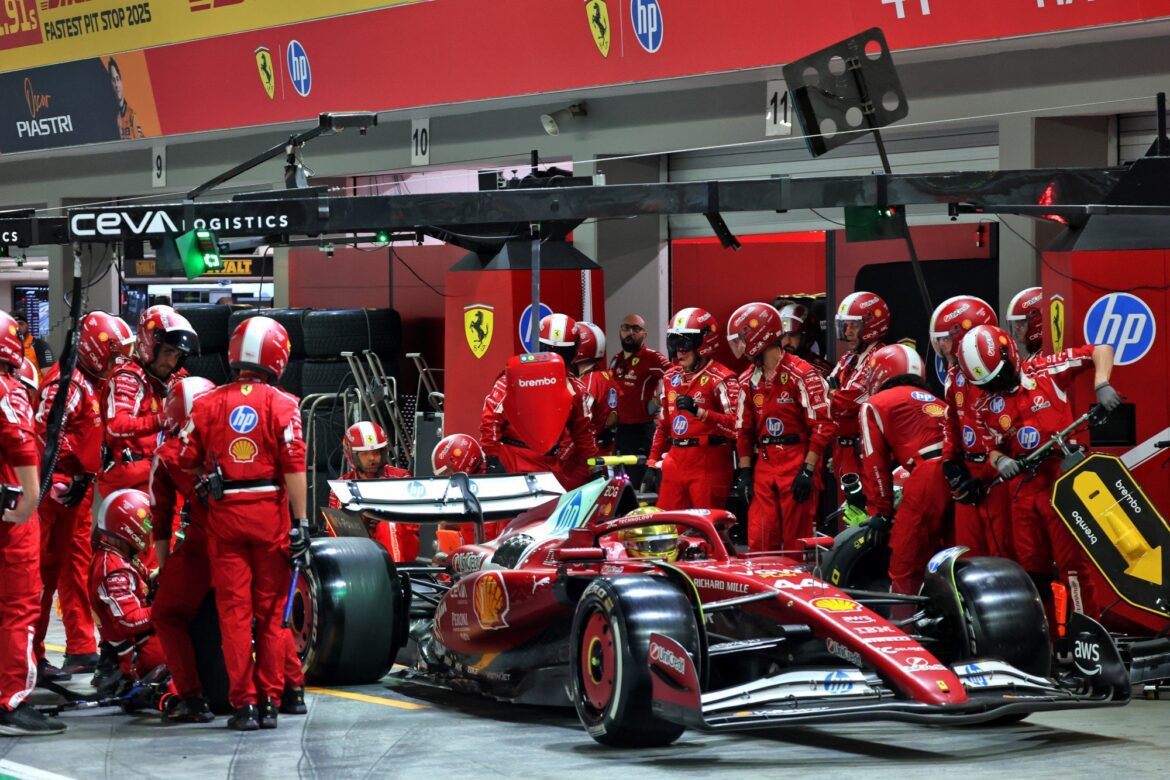Lewis Hamilton Faces Penalty at the Singapore Grand Prix
Lewis Hamilton experienced a dramatic turn of events during the Singapore Grand Prix in Formula 1, losing the seventh position he had secured on the track due to a penalty imposed by the FIA officials. The British driver, who had opted for a late pit stop to switch to soft tires, was initially making significant gains on competitors Charles Leclerc and Kimi Antonelli. However, as the race progressed, Hamilton found himself in a precarious situation, finishing only 0.4 seconds ahead of Fernando Alonso.
Brake Issues Impact Performance
In the closing laps of the race, Hamilton’s car suffered from front brake failure, forcing him to slow down considerably. This mechanical issue not only hampered his performance but also opened the door for Alonso, who was right on his tail. The tension increased as Alonso, driving for Ferrari, attempted to capitalize on Hamilton’s misfortune.
During these critical moments, Hamilton struggled to maintain his racing line, leading to multiple track limit violations. These infractions prompted a review by race officials after the conclusion of the event. The FIA stepped in to investigate the situation, assessing data, video footage, team radio communications, and internal images from the race.
Investigation and Penalty
Upon reviewing the evidence, the FIA commissioners concluded that Hamilton’s track excursions did not fall under the exceptions outlined in the regulations. In their official report, the commissioners noted, “During the hearing, the driver confirmed that he left the track on several occasions while attempting to manage a braking issue.” Despite Hamilton’s explanation, the officials determined that the reasons provided did not justify his deviations from the track limits.
The report further clarified that after a detailed investigation and in accordance with the guidelines specified in the Driving Standards, the commissioners deemed that Hamilton’s infractions warranted a standard penalty. This decision was unchallenged by the team’s representative or Hamilton himself, highlighting the procedural nature of the ruling.
Final Results
As a result of the five-second penalty added to his final race time, Hamilton dropped from seventh to eighth place in the standings. This shift allowed Fernando Alonso to inherit the seventh position officially. The outcome was disappointing for Hamilton, who had been fighting hard and showcasing his competitive spirit throughout the race.
Implications for the Championship
The penalty not only affected Hamilton’s standings in this particular race but also had broader implications for the championship standings. With each point crucial in the battle for the title, losing positions due to penalties can be detrimental to a driver’s chances of securing the championship crown.
The incident at the Singapore Grand Prix serves as a reminder of the intense scrutiny that Formula 1 drivers and teams face during races. Every decision made on the track, from pit strategies to handling mechanical issues, can significantly impact the final outcome of the race and, ultimately, the season.
The Role of Team Strategy
Team strategy plays a vital role in the performance of drivers like Hamilton. The choice to switch to soft tires late in the race was a tactical move aimed at gaining an advantage over competitors. However, the unexpected brake failure and subsequent penalties illustrate the complexities of racing in Formula 1. Teams must constantly adapt their strategies based on real-time data and potential risks.
The decision-making process in Formula 1 is fast-paced and often requires teams to make split-second choices that can have lasting effects. In Hamilton’s case, while the pit stop strategy initially appeared to be beneficial, the unforeseen mechanical issues led to a disappointing end to his race, emphasizing the unpredictable nature of motorsport.
Fan Reactions and Media Coverage
The aftermath of the Singapore Grand Prix sparked a flurry of reactions from fans and media alike. Many expressed their disappointment at Hamilton’s penalty, believing it was a harsh outcome given the circumstances surrounding his performance. Social media platforms were flooded with opinions, debates, and discussions about the fairness of the ruling.
Critics of the FIA’s decision pointed to the challenges drivers face when dealing with mechanical failures and the inherent unpredictability of racing. Supporters of the ruling argued that maintaining strict adherence to track limits is essential for ensuring fair competition among all drivers.
Media coverage of the event highlighted not only the penalty itself but also the broader implications for the championship battle. As the season progresses, every race carries weight, and the stakes continue to rise.
Looking Ahead
As Hamilton and his team look ahead to future races, they will undoubtedly analyze the events of the Singapore Grand Prix to refine their approach. The lessons learned from this race will be crucial as they aim to regain lost points and maintain competitiveness in the championship.
The upcoming races will be critical for Hamilton, who is known for his resilience and ability to bounce back from challenging situations. The support from his fans, coupled with his determination, will be instrumental as he strives to reclaim his position among the top contenders in the championship.
Conclusion
The Singapore Grand Prix showcased the thrilling yet unpredictable nature of Formula 1 racing. Lewis Hamilton’s experience serves as a potent reminder of the challenges faced by drivers on the track, where mechanical issues and regulatory decisions can significantly alter the course of a race. As the season unfolds, fans and analysts will be watching closely to see how Hamilton and his team adapt and respond to the challenges ahead.
